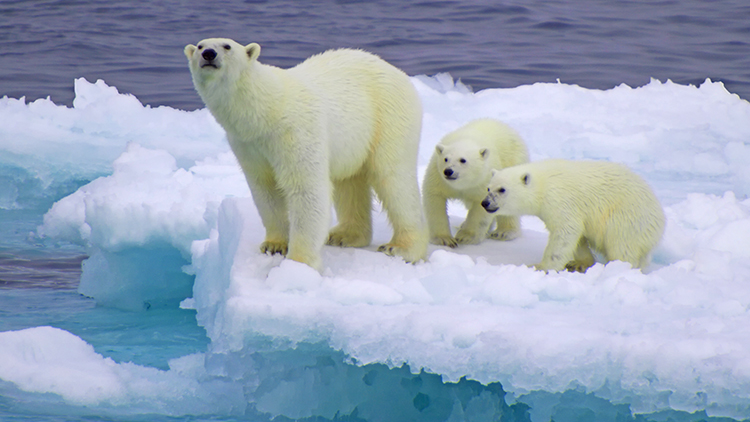
Imagine going outside to put some garbage in a can—and finding a polar bear rummaging through your trash! Although encounters like this were rare in the past, they are becoming more common. What has caused the increase in polar bear-human interaction? The Earth’s climate is getting warmer. The five warmest years that have ever been recorded have happened since 2010.
Climate change (the warming of the earth’s climate) has had the most impact in the Arctic, where polar bears live. The Arctic has been largely covered with ice, but the amount of sea ice is declining every year. It freezes later in the fall and melts earlier every spring. Scientists, in fact, believe that the Arctic could have ice-free summers in the next 30 years.
With ice melting sooner each spring, the edge of the ice has come closer and closer to the shore. As polar bears follow the edge of the ice, they can smell food and garbage in towns and settlements. Although there are not reported cases of deaths or injuries from bears in places like Greenland, polar bears are big, strong animals—the risks to people and property are increasing.
What can communities do to lessen the risks from polar bears? In some places, people patrol for bears. When they encounter them, they try to scare them away, often with loud noises. Towns burn their food garbage instead of storing it in dumps so that the garbage doesn’t attract bears. And scientists use technology to track the bears and their food sources, hoping to keep settlements safe.
Of course, climate change is at the heart of the problem, and climate change needs to be slowed in order to help polar bears and avoid many other problems. But if climate change continues, people will need to look for more ways to peacefully co-exist with these giant bears.
What Do You Think? Why is climate change such a big problem for polar bears? What do you think you could do to help polar bears and other animals affected by climate change?
Photo Credit: Vadim Balakin/Moment/Getty Images



